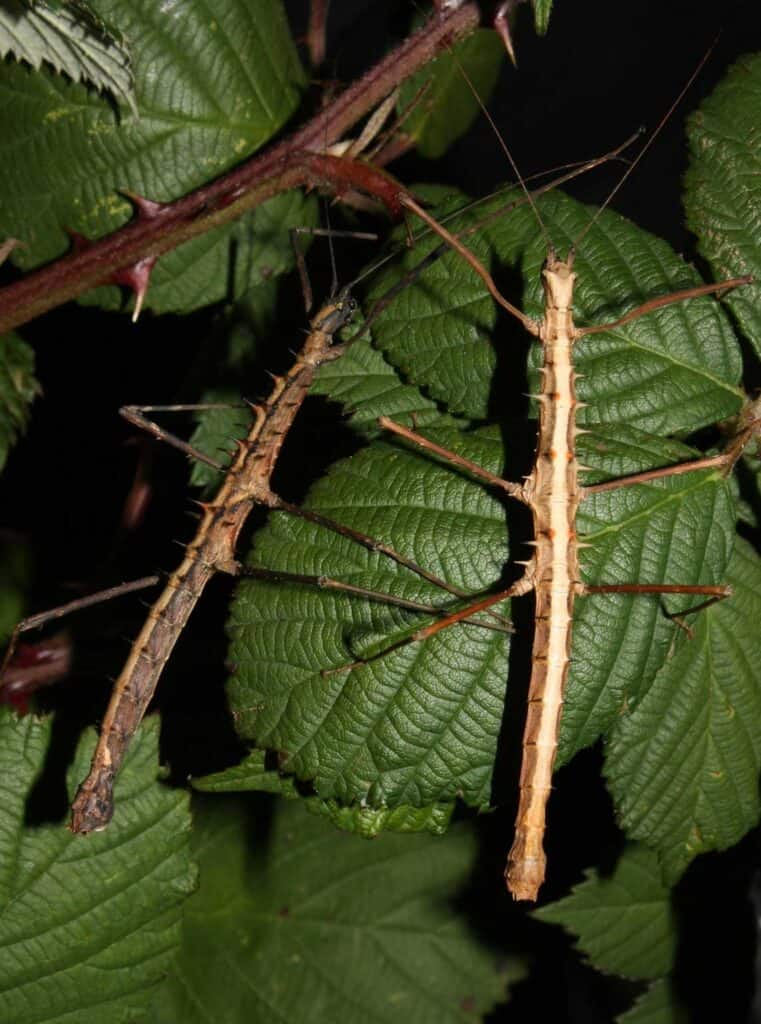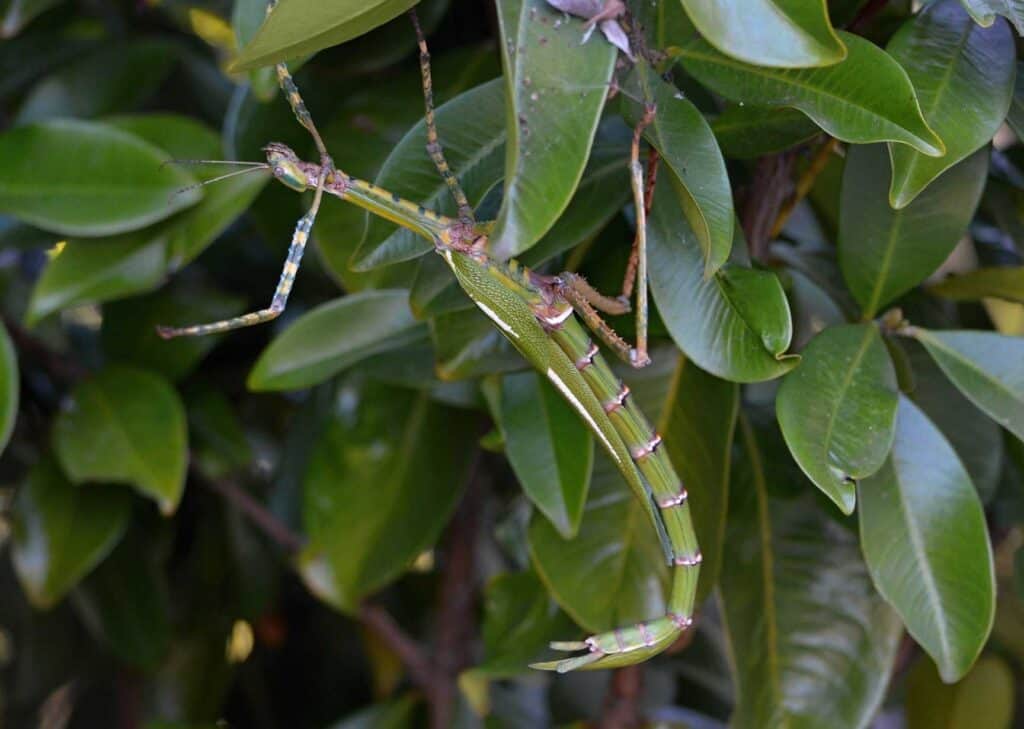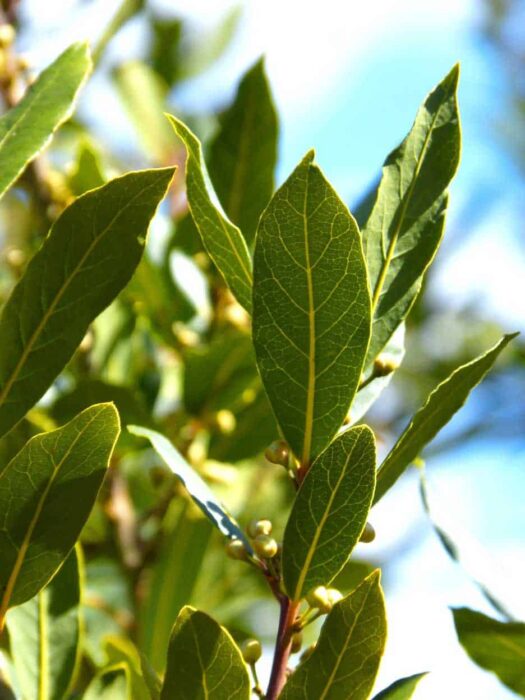Table of Contents
Laurel leaf consumption has a long and interesting history. In the earliest days it was used by ancient soothsayers for their psychoactive effects. They have also been used as salves and other types of folk remedies, as well as for use in massage and aromatherapy. Latterly, laurel is used extensively as a herb in cooking. But in our case, they are also a type of leaf that some stick insects have a liking for .
.
If you happen to live in an area where natural laurel leaves are grown, you may be able to use them as a food source for your stick insect.
Yes, some stick insect species do eat laurel leaves. The best way to find out if yours do is to just place some in their enclosure and see. Don’t worry about poisoning them though as stick insects instinctively do not eat anything harmful to them.
Very importantly though, it should be noted that only a very few stick insect species consume laurel as they are full of toxins, hence the aforementioned psychoactive effects in humans.
So back to the question of can stick insects eat laurel.
For more advice and information on keeping and looking after stick insects, check out my ebook on Amazon click here
(opens in a new tab).

What Do Stick Insects Prefer to Feed On?
Stick insects, as a general species, have a varied diet. All types of leaves are potential meals for these wonderful insects. However, as I will show a little later in this article, each species will have certain leaves they will and will not eat.
The most important thing to know is that whatever leaves your stick insect does eat must be fresh. Frozen leaves or half rotten leaves will not be eaten by any stick insect. They are picky eaters and most species would rather starve than eat something they don’t like.
Even if a leaf has only very small brown tinges to it, the insects will only consume the fresh green parts while completely ignoring the brown parts. You have to be extremely careful when feeding stick insects for this very reason.
Nevertheless, there is also an advantage to these creatures being fussy eaters. It means that you could inadvertently feed them leaves like laurel and holly (if your particular species doesn’t eat these type of leaves, obviously) and, as your stick does not like it or the particular leaf in question could be dangerous for them, they simply will not eat it. They will not eat a leaf regardless.
(if your particular species doesn’t eat these type of leaves, obviously) and, as your stick does not like it or the particular leaf in question could be dangerous for them, they simply will not eat it. They will not eat a leaf regardless.

Stick Insects and their Diets
So in a nutshell, the main thing you need to be aware of is that stick insects will not eat something that doesn’t agree with them. Every stick insect species will have its own likes and dislikes; one particular leaf could be fine for one species, but poisonous to another.
For example, the Australian Museum says that native Australian stick insects are capable of eating eucalyptus leaves . But this is definitely not the case for North American stick insects. They are not going to encounter eucalyptus leaves in the wild, so they will not eat them if they come across them in captivity.
. But this is definitely not the case for North American stick insects. They are not going to encounter eucalyptus leaves in the wild, so they will not eat them if they come across them in captivity.
Research, therefore, is important for knowing whether your particular stick insect species is capable of eating laurel or not. As a general rule of thumb, if a plant cannot be found in your stick insect species native environment, the chances are it will not consume them in captivity.
This doesn’t just go for laurel; it the same for rose bush leaves, bramble leaves, spinach leaves , etc.
, etc.
Can Your Particular Stick Insect Eat Laurel?
The majority of stick insects will not encounter laurel in the wild, so they won’t eat it if it is presented to them. Laurel only grows in specific areas of the world.
Even if your stick insect does eat laurel, be very careful about where you source it from. If it is imported, there could be various preservatives and sprays used to make it suitable for importation; such things can poison your stick insect.
Again, do your research to find out what your stick insect is likely to encounter in its native region.
How Should You Prepare Laurel for Your Stick Insect?
The laurel leaves must be fresh. They shouldn’t be older than a couple of days or they will start to dry out and your stick insects will not eat dry or rotting leaves, as mentioned above. So you should ensure you have a fresh supply of leaves that can be easily accessed.
If your stick insect isn’t eating the laurel leaves, it may be a case of freshness and not of the insect not liking them.
The biggest risk to getting the food wrong is that your stick insect will starve. And know that even if the stick insect is starving , it will not eat something that is not agreeable to them – in either choice of leaves or freshness.
, it will not eat something that is not agreeable to them – in either choice of leaves or freshness.
How do you establish a fresh supply of laurel leaves?
You likely already know that anything sprayed with pesticides and insecticides should be avoided. So never buy anything for your insect from the local garden centre.
But there may also be hidden dangers on laurel leaves picked wildly. If they happen to be too close to busy roads or factories, for example, they could have been polluted by the fumes. You need to look for organic laurel leaves, which means laurel is likely not suitable for you unless you happen to live in the countryside where it grows.
Finally, do bear in mind that you should mist the leaves. Most stick insects drink by taking the moisture sitting on the leaves.
by taking the moisture sitting on the leaves.
How Often Should You Feed Your Stick Insect?
Your stick insects can be voracious eaters. Despite their small stature, a colony of stick insects can consume whatever you feed them in a matter of a day or two. Novice owners are shocked at how much they have to feed their insects.
The majority of your time caring for your sticks will be dedicated to providing them with the food they need to grow. Remember that stick insects are nocturnal and prefer to eat at night. Provide them with food in the evenings so they have something available when they’re most active.
You will find that the majority of the food you provide is gone by the time you wake up. This is the reason it is wise to replace the food each day to ensure they have enough and that whatever is left over is removed.
To lock in freshness and keep the leaves moist, stick the stems in water. If you have any smaller nymphs in your colony, place a net over the top of the water receptacle so the stems can stick through but the nymphs can’t fall in.
Nymphs do not have the strength to pull themselves out of water and will drown extremely quickly.
If you don’t have a mosquito net available, you can always use toilet paper, but netting is a much better option.
Experimenting with Providing Laurel to Your Stick Insects
The only way to find out if your stick insect likes laurel is to experiment (obviously after your research has shown that your particular species could be partial to laurel leaves). Provide them with some clean laurel and see if they will eat it. Leave it for a few hours and if they haven’t touched it you know not to serve it again.
As we already stated a couple of times in this piece, they will ignore anything they don’t like.
Nonetheless, as stick insects will starve if there is nothing available that is suitable for them, offer laurel alongside what you know is their preferred food source so that they still have something to eat.
Not providing them with the food they need can leave them extremely stressed and prevent them from moulting.

Last Word – Should You Feed Laurel to Your Stick Insects?
Stick insects will only eat laurel if they encounter it in their natural habitat. If they do not come from an area where it grows naturally then it is unlikely that they will want to eat it.
But if you do want to experiment feel free to do so as stick insects can differentiate between food that are suitable and foods that are not.
For some extra advice, talk to someone at your local pet shop. They will be able to tell you what they normally feed their stick insects and whether laurel will be suitable for them.

